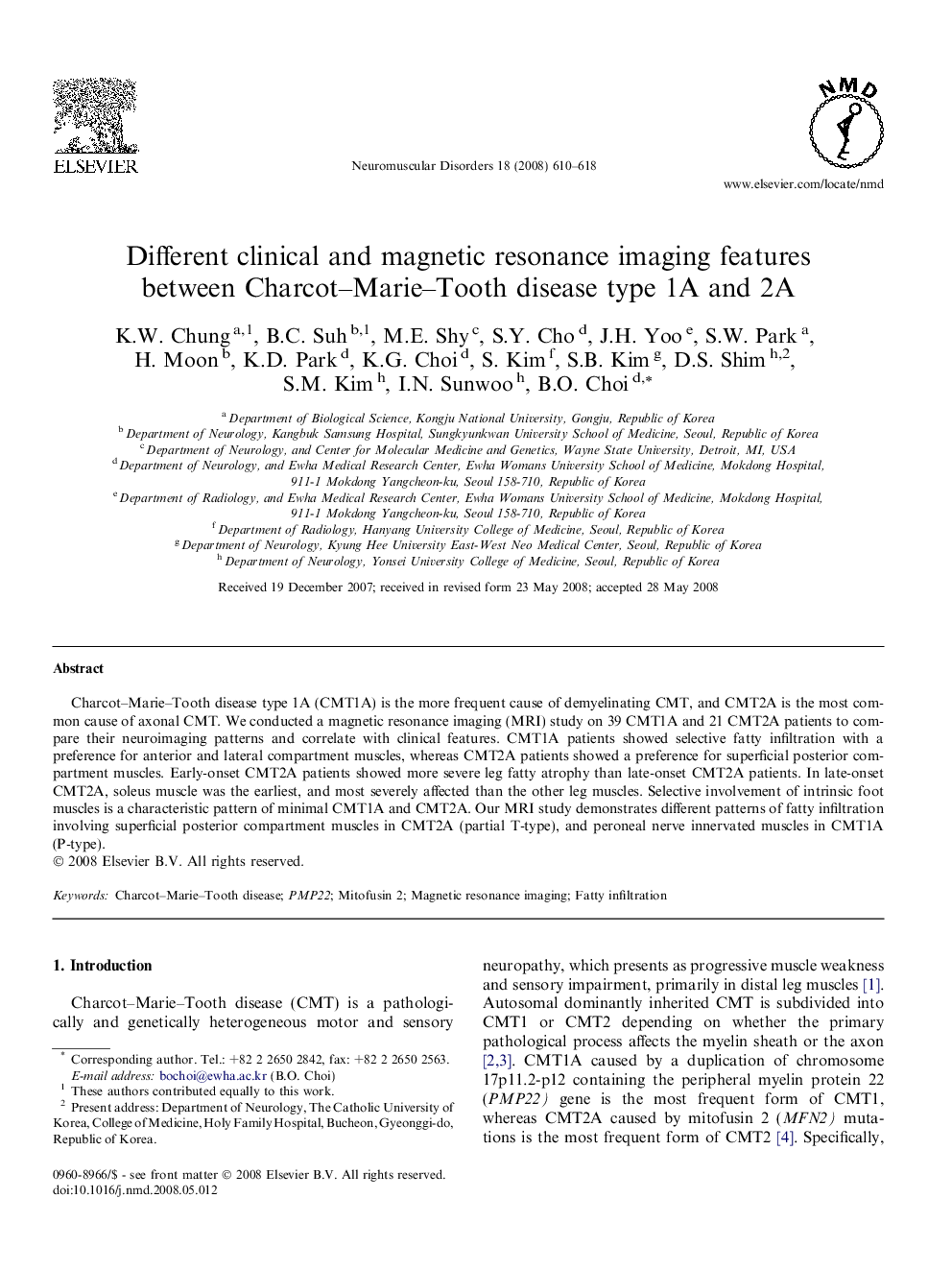| Article ID | Journal | Published Year | Pages | File Type |
|---|---|---|---|---|
| 3081614 | Neuromuscular Disorders | 2008 | 9 Pages |
Charcot–Marie–Tooth disease type 1A (CMT1A) is the more frequent cause of demyelinating CMT, and CMT2A is the most common cause of axonal CMT. We conducted a magnetic resonance imaging (MRI) study on 39 CMT1A and 21 CMT2A patients to compare their neuroimaging patterns and correlate with clinical features. CMT1A patients showed selective fatty infiltration with a preference for anterior and lateral compartment muscles, whereas CMT2A patients showed a preference for superficial posterior compartment muscles. Early-onset CMT2A patients showed more severe leg fatty atrophy than late-onset CMT2A patients. In late-onset CMT2A, soleus muscle was the earliest, and most severely affected than the other leg muscles. Selective involvement of intrinsic foot muscles is a characteristic pattern of minimal CMT1A and CMT2A. Our MRI study demonstrates different patterns of fatty infiltration involving superficial posterior compartment muscles in CMT2A (partial T-type), and peroneal nerve innervated muscles in CMT1A (P-type).
